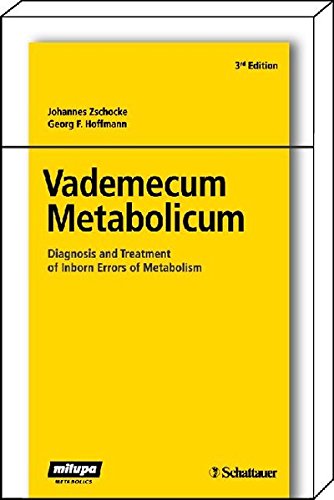Vademecum Metabolicum (2011) is an expensive, weirdly named, and hard-to-find 150-page niche book, but it’s the best in its genre.
“Vademecum” is Latin for “handbook.” (I know this because I looked it up). So, this is a handbook about metabolic disorders. The book contains virtually everything you need to know if you are, or want to become, a practicing clinical geneticist who specializes in metabolic disorders. The first 50 pages or so are probably most relevant to someone who is not a clinical geneticist. These pages lay out the approach to the investigation, or work-up, of patients with suspected rare metabolic diseases.

The rest of the book contains discussions of specific disorders such as Maple Syrup Urine Disease, Alkaptonuria, and hereditary fructose intolerance. Although concise, the discussions are relevant and sufficiently detailed. Each disease is discussed in terms of clinical presentation, biochemistry, diagnosis, and treatment (if known).
[There are eight clinical situations where the presence of an inherent metabolic disease should be suspected:
- Persistent or worsening symptoms despite a reasonable and standard initial workup and management (for example, sepsis workup with empiric antibiotic treatment).
- Normal pregnancy and birth, but the infant begins to deteriorate after an asymptomatic interval (usually after 24 hours)
- Symptoms are precipitated or exacerbated by changes in metabolic state or habits: feeding, starvation, dietary changes, or exertion.
- Progressively worsening dysmorphic features.
- Unusual or suspicious family history, such as consanguinity or early death, particularly in infancy.
- Bizarre laboratory abnormalities (for example, ammonia > 200 → urea cycle defects)
- Peculiar odor.
- Unexplained multisystem disorders.]
The worst thing about this book it that it’s extremely expensive and hard to find (almost to the point of making you wonder if the book exist or not!). On some websites, you can expect to pay close to a thousand dollars (U.S.) for a recent English language copy.
I highly recommend Vademecum Metabolicum (2011) to clinical geneticist, neonatologists and trainees in those fields. Generalists with an interest in inherited metabolic diseases would also undoubtedly enjoy browsing through it.


Leave a Reply